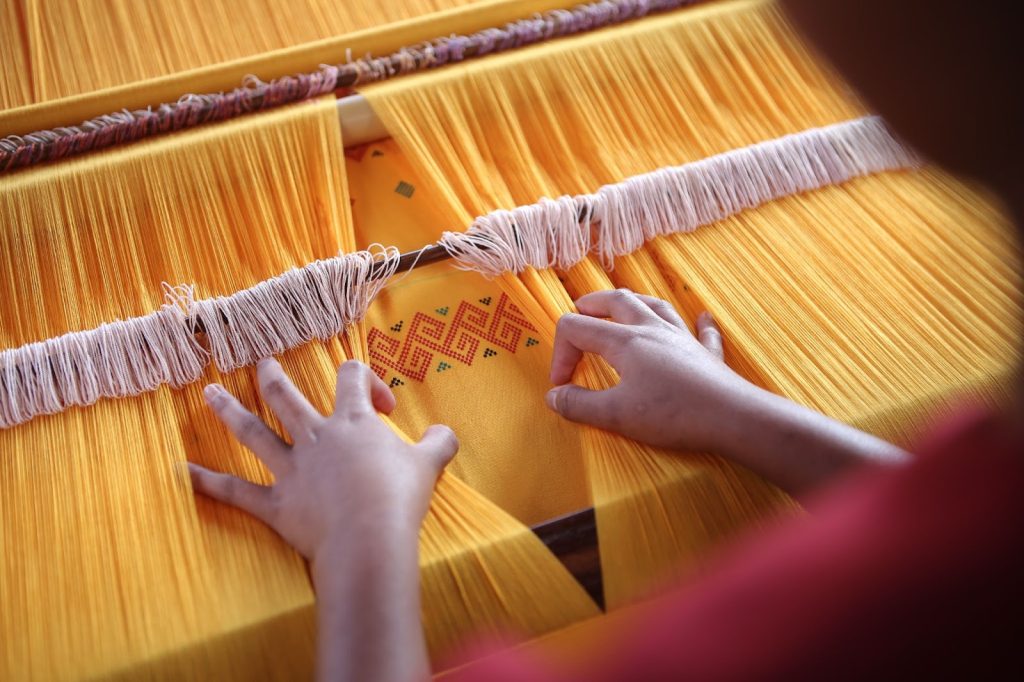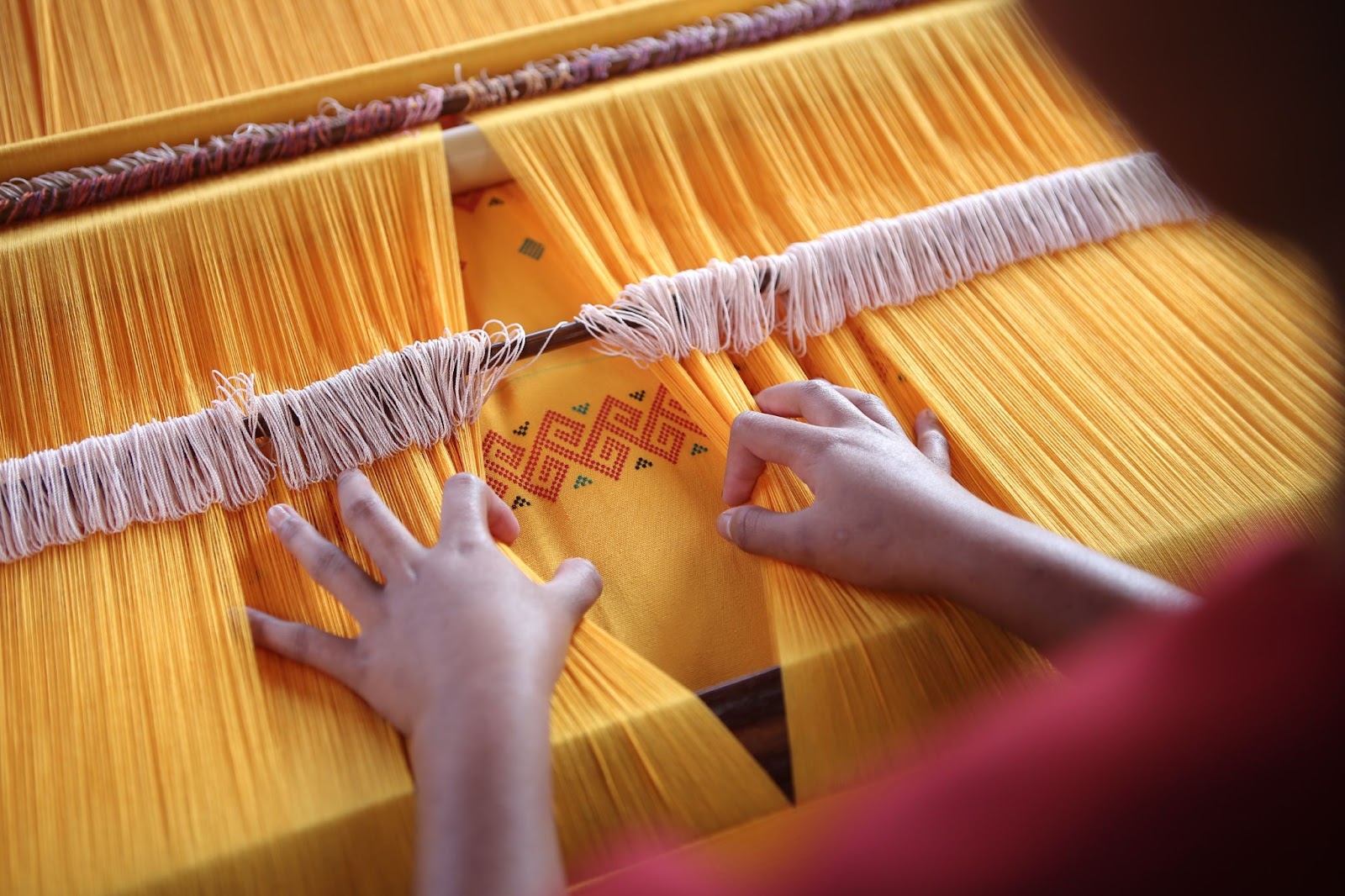
“Woven Being: Exploring the Intricacies of Native Art and Life”

# Exploring *Woven Being: Art for Zhegagoynak/Chicagoland* at the Block Museum
### A Multilayered Exhibition of Indigenous Art and Cultural Narratives
**EVANSTON, ILLINOIS** – The *Woven Being: Art for Zhegagoynak/Chicagoland* exhibition at Northwestern University’s Block Museum is a groundbreaking presentation of Native art that challenges traditional curatorial methods and redefines how Indigenous culture is represented in museums. Featuring 33 artists, the exhibition intertwines themes of land, lineage, time, and materials, in a structure that privileges community and non-hierarchical decision-making.
**Frank Big Bear’s Masterpiece: A Universe in Collage**
A standout in the exhibition is *The Walker Collage, Multiverse #10* by Frank Big Bear, a member of the White Earth Ojibwe tribe. Stretching an astounding 30 feet wide, Big Bear’s collage is a visual cosmos, layering Cycladic figurines, Cindy Sherman dress-up, Assyrian kings, Marilyn Monroe, war imagery, family portraits, high fashion, and natural elements into a surreal and interconnected tapestry. With 432 individual pieces created on identical invitation cards for an exhibition by his son, Star Wallowing Bull, Big Bear constructs a powerful meditation on history, identity, and the multiverse of images that shape our world.
**Rethinking the Museum Narrative**
Curated in collaboration with Indigenous artists and scholars, *Woven Being* reflects the Block Museum’s commitment to honoring the Indigenous land upon which it stands. The curatorial team includes Kathleen Bickford Berzock, Janet Dees, Crystal Bridges Museum curator Jordan Poorman Cocker, and four artist-collaborators—Andrea Carlson, Kelly Church, Nora Moore Lloyd, and Jason Wesaw—who, in turn, selected additional artist participants. This decentralized and relational approach echoes Documenta 15’s collective curatorial model and offers an alternative to conventional institutional exhibitions.
The show successfully intertwines themes of land stewardship, non-linear time, and historical memory, and takes a multisensory approach, with visitors encountering a subtle infusion of the scent of sweetgrass—paying homage to traditional Indigenous mourning rituals.
**Native and Non-Native Abstraction in Dialogue**
One of the most engaging segments of the exhibition, curated by Jason Wesaw, initiates a dialogue on Native versus non-Native abstraction. Pieces by Josef Albers, Barnett Newman, and Agnes Martin are exhibited alongside works by Indigenous artists such as Jeffrey Gibson, whose elk hide drum radiates disco-esque energy; and George Morrison, whose pointillist depictions of Lake Superior shimmer with subdued brilliance. The grouping highlights the intersections of minimalism, patterning, and cultural memory while challenging the categorical distinctions imposed by art history.
**Baskets, Totems, and the Future of Indigenous Craft**
A significant focus of *Woven Being* is the exploration of woven forms, from baskets to contemporary sculptures inspired by traditional weaving techniques. Kelly Church, for example, uses black ash and white cedar bark to craft a sculptural text piece that reads *NATIVE LAND*, an all-caps acknowledgment of Indigenous sovereignty. The shadows from the piece cast the phrase *YOU ARE ON NATIVE LAND* onto the ground—an ephemeral but powerful reminder to viewers.
Church also innovates with materials, fashioning a porcupine basket from repurposed window blinds—a direct commentary on the environmental destruction of ash trees due to the emerald ash borer. Meanwhile, her daughter, Cherish Parrish, transforms a basket into a jingle dress sculpture, blending craft with personal and cultural histories.
Birch bark biting, or *mazinibakajige*, is another rarely highlighted art form showcased in the exhibition. This intricate technique, where thin birch bark is carefully bitten into patterns of dragons, turtles, and floral motifs, is given prominence through oversized reproductions displayed on the museum’s exterior windows.
**Blending Past and Future: Contemporary Interpretations of Tradition**
Several artworks explicitly recontextualize Indigenous history with contemporary materials and themes. Virgil Ortiz’s ceramic figures, for instance, recall the Pueblo Revolt of 1680—but with futuristic aesthetic influences reminiscent of science fiction warriors. This blend of tradition and modernism underscores the ongoing resistance and adaptability of Indigenous cultures.
Chris Pappan’s graphite triptych manipulates and distorts archival photographs of Sac and Fox Nation members, his brilliant blue gouache interventions forming the *Y*-shaped map of the Chicago River. This layering of cartography, history, and personal identity underscores the ongoing effects of displacement and loss.
**A Stunning Companion Exhibit: Jordan Ann Craig’s *it takes a long time to stay here***
Complementing *Woven Being* is a solo show by Northern Cheyenne artist Jordan Ann Craig. Her precise geometric